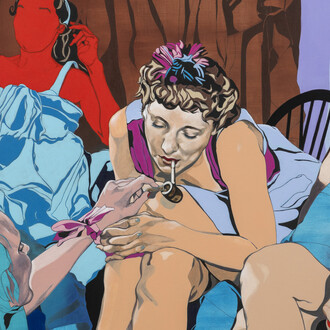This summer, the Rijksmuseum and the Stedelijk Museum Amsterdam are programming work by the French artist Jean Dubuffet (1901-1985). The Rijksmuseum will present sculptures by the artist in the museum gardens and, for the first time, the Stedelijk will exhibit the entire group of Dubuffet works in its collection.
How can you capture thoughts that shoot off in all directions, in a painting? And how can you represent a world that is beyond objective reality in a work of art? From the 1940s onwards, these were the questions that constantly preoccupied Jean Dubuffet.
The first gallery of the exhibition presents paintings and lithographs made in the 1950s, when the artist experimented with materials not usually used in painting, such as asphalt. Dubuffet’s compositions were also deliberately confusing: he worked with two overlapping perspectives – the scene seen from a frontal elevation, and the panoramic perspective.
In the second gallery, the emphasis is on paintings and sculptures made during the 1960s, when Dubuffet was working on an ‘irrational world’, in a series of works in which he reduced figures, landscapes and objects to a tangle of black lines against a white background with accents of colour. The result is a mystifying illusion of hollows and bulges.
Edy de Wilde, director of the Stedelijk from 1963 to 1985, amassed a large collection of pieces by Dubuffet and, in the 1960s, staged exhibitions of his work. De Wilde’s acquisition policy favoured buying the work of contemporary artists, leading him to purchase a number of pieces directly from Dubuffet. Eager to ensure that a representative selection of his work would be seen in a European museum, the artist also gifted a number of pieces to the Stedelijk in 1965.
















